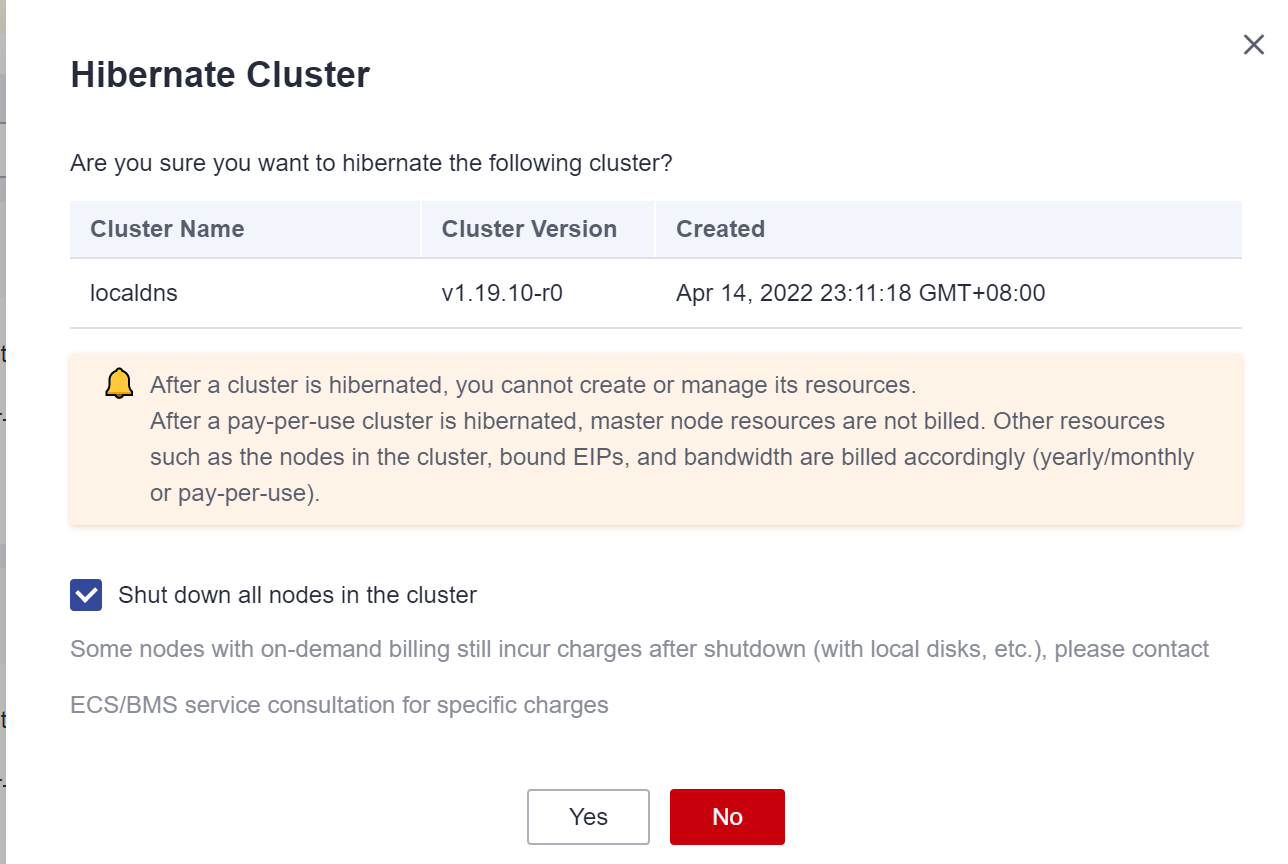Hibernación y activación de un clúster (pago por uso)
Escenario
Si no necesita utilizar un clúster temporalmente, se recomienda hibernar el clúster.
Después de hibernar un clúster, recursos como cargas de trabajo no se pueden crear ni gestionar en el clúster.
Un clúster hibernado puede despertarse rápidamente y usarse normalmente.
Restricciones
Los clústeres facturados anualmente/mensualmente no se pueden hibernar.
Durante la activación del clúster, es posible que el nodo principal no se inicie debido a la insuficiencia de recursos. Como resultado, el clúster no puede ser despertado. Espere un rato y vuelva a activar el clúster.
Hibernación de un clúster
- Inicie sesión en la consola de CCE. En el panel de navegación, elija Clusters.
- Haga clic en
 junto al clúster que se va a hibernar.
Figura 1 Hibernación de un clúster
junto al clúster que se va a hibernar.
Figura 1 Hibernación de un clúster
- En el cuadro de diálogo que aparece, compruebe las precauciones y haga clic en Yes. Espere hasta que el clúster esté hibernado.
Después de hibernar un clúster, se detendrá la facturación de los recursos del nodo principal. Los recursos, como los nodos de trabajo (ECS), las EIP enlazadas y el ancho de banda, todavía se facturan en función de sus propios modos de facturación. Para cerrar los nodos, seleccione Stop all nodes in the cluster en el cuadro de diálogo o vea Detención de un nodo.
La mayoría de los nodos ya no se facturan después de detenerlos, excluidos ciertos tipos de ECS (unos con discos locales conectados, como ECS con uso intensivo de disco y con capacidad ultraalta de E/S). Para obtener más información, consulte Facturación de ECS.
Figura 2 Información de solicitud
Despierta de un clúster
- Inicie sesión en la consola de CCE. En el panel de navegación, elija Clusters.
- Haga clic en
 junto al clúster que se va a despertar.
Figura 3 Despierta de un clúster
junto al clúster que se va a despertar.
Figura 3 Despierta de un clúster
- Cuando el estado del clúster cambia de Waking up a Running, se activa el clúster. Se tarda entre 3 y 5 minutos en despertar el clúster.

Después de activar el clúster, se reanudará la facturación de los recursos en el nodo principal.






